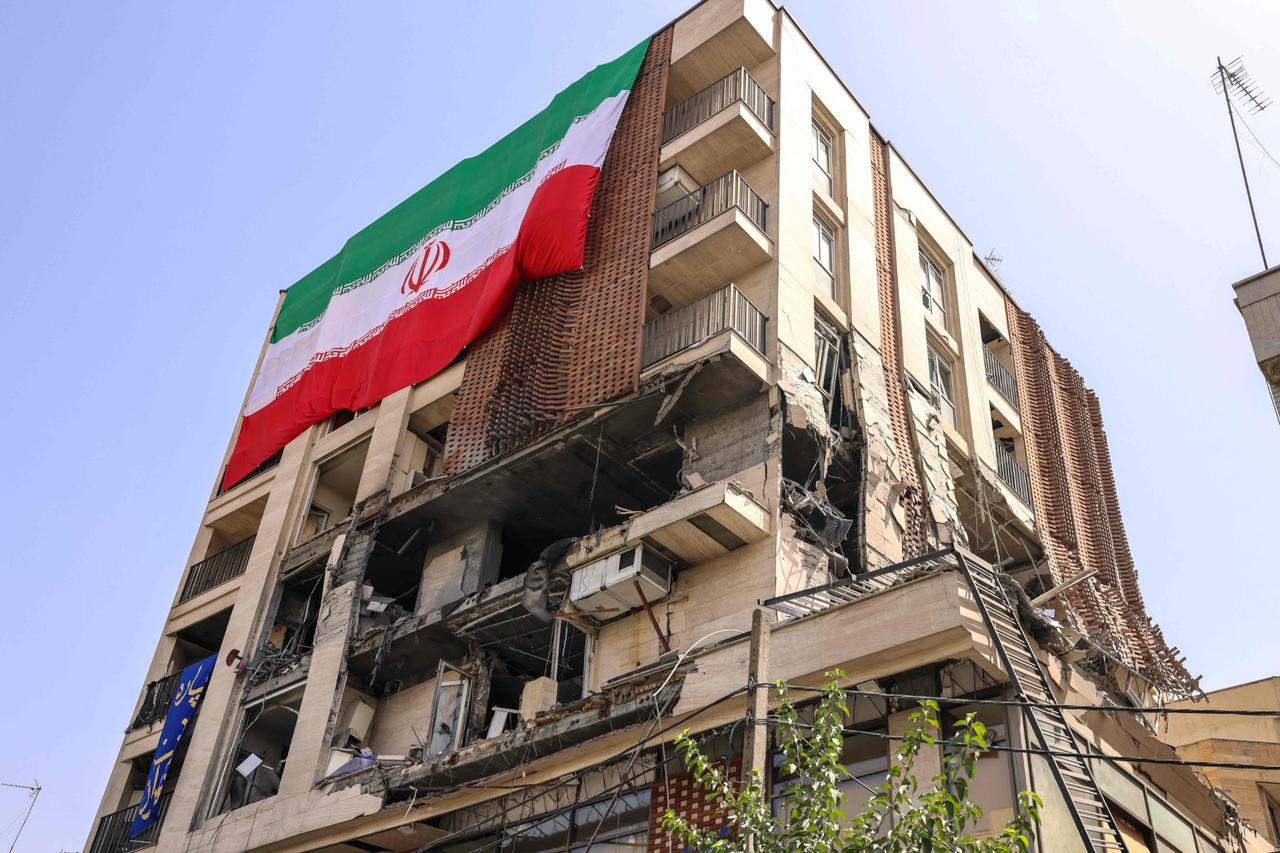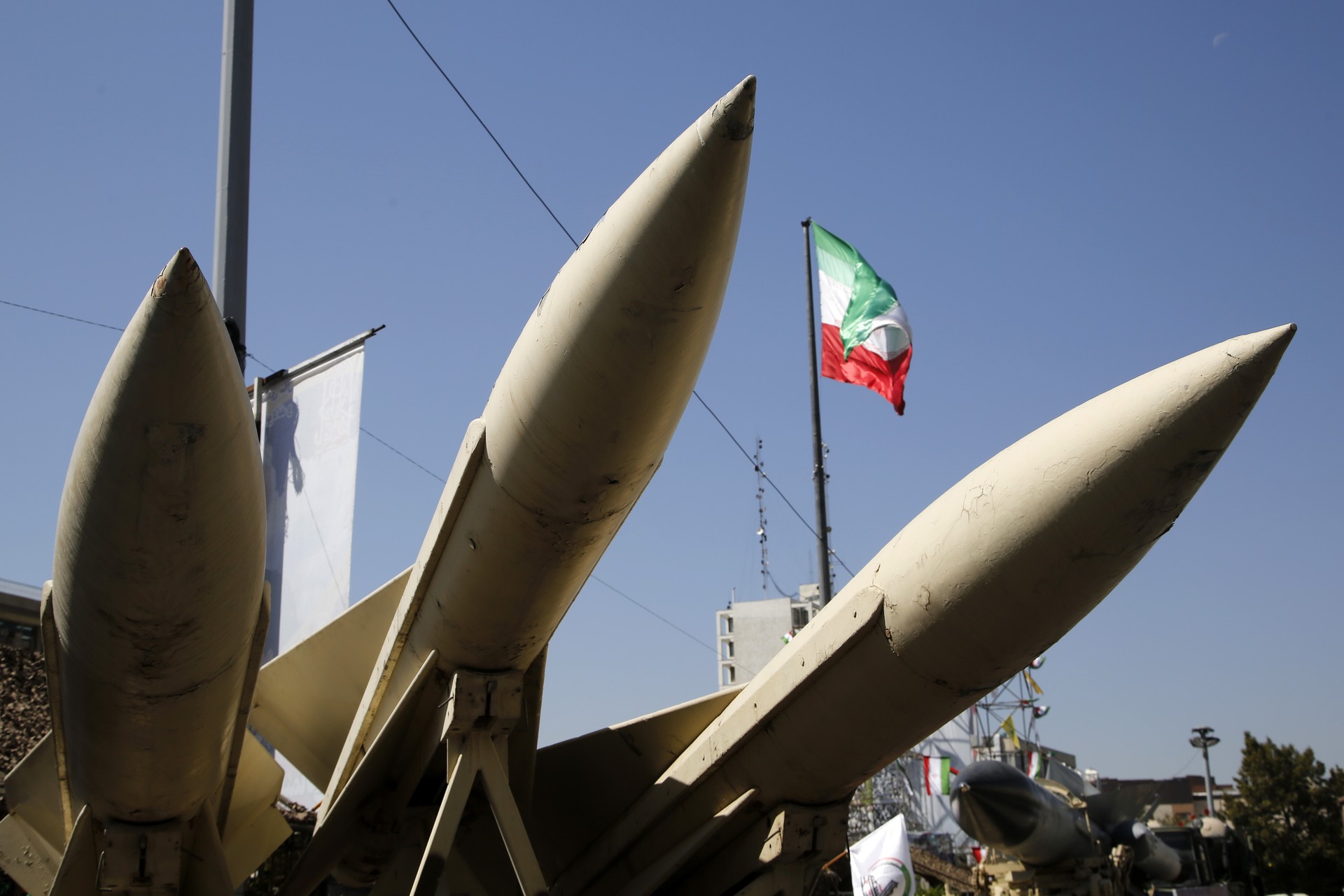
Israel’s Defense Minister Israel Katz said Thursday that Israel may resume airstrikes inside Iran if Tehran continues to develop long-range missile capabilities, a threat which broadens the confrontation well beyond the nuclear file, and takes the standards of a potential deal to ground zero.
Speaking to Israeli media, Katz signaled that the Islamic Republic should not be allowed to arm itself with conventional means of deterrence either.
Yet this posture is nothing new. Israeli officials have long viewed Iran’s missile program—particularly its solid-fuel, long-range arsenal—as a central component of Tehran’s regional posture and a non-nuclear challenge to Israeli security dominance in the neighborhood. What is changing is the policy consensus around it on the international level, as Iran’s weakness becomes clearer.
Behind the Trump administration’s 2018 withdrawal from the Joint Comprehensive Plan of Action (JCPOA) was not only the stated goal of halting Iran’s nuclear program, but also the unstated aim of curbing Iran’s expanding conventional military footprint—particularly its ballistic missile program and regional proxy network, according to emerging claims. The collapse of the JCPOA thus marked the beginning of a broader effort to dismantle Iran’s deterrence architecture in full.
Since Oct. 7, 2023 and the subsequent escalation across the region, this strategic outlook has crystallized further. Israeli planners now appear intent on degrading Iran’s military infrastructure to the point of internal fragmentation. The goal is to render Iran incapable of projecting power beyond its borders and to severely limit its ability to operate even within them—mirroring Syria’s post-war military collapse following repeated Israeli airstrikes.

Israel’s recent waves of airstrikes inside Iranian territory offered the clearest indication yet of this strategic shift. Backed by U.S. intelligence and logistical coordination, the operations targeted key military-industrial sites—including Iran’s solid-fuel missile production facilities in Hojir and Parchin—as well as a prison, a strike that constitutes a direct violation of international law.
Satellite imagery released in the aftermath showed clear degradation of Iran’s air defense grid around strategic infrastructure. These attacks were reportedly designed to suppress Iran’s surface-to-air missile coverage (SEAD operations), exposing the broader goal: shaping the balance of power before a potential return to a revised agreement framework.
Talks between Washington and Tehran—quietly relaunched in Oman and later in Rome—initially centered on nuclear compliance. But the military developments on the ground have widened the scope of negotiations. Discussions now reportedly include restrictions on Iran’s ballistic missile program, particularly on solid-fuel rockets, and the dismantling of its network of regional militias.
This shift reflects a new negotiating logic in Washington and Tel Aviv: a return to the JCPOA is not viable unless Iran’s conventional and asymmetric capabilities are brought under control. These elements, long outside the original 2015 framework, now appear central to the emerging deal’s architecture.
Some European policymakers, while primarily focused on nuclear non-proliferation, have begun to show growing support for Israel’s strategic approach. Iran’s ambitions to develop long-range missile systems with ranges up to 5,000 kilometers would put much of the European continent within reach.

Since the Israeli strike on the Iranian consulate in Damascus on April 1, the campaign to dismantle Tehran’s regional influence has accelerated. A series of targeted assassinations and airstrikes has weakened Hezbollah’s command structure in Lebanon and eliminated mid-level commanders in Syria. In Yemen, Iranian-aligned Houthi forces have also been on the receiving end of increased military pressure with the generous help of the U.S. forces.
This pattern suggests a phased strategy to dismantle Tehran-backed armed groups operating across the Levant and Gulf. In parallel, diplomatic signaling has made clear that the future of these groups is now a formal topic of negotiation.
Tehran, for its part, has responded with a mix of deterrence signaling and selective escalation. In March 2025, Iran publicly unveiled its underground ballistic missile inventory—a rare move interpreted as an effort to underscore the cost of further escalation.
Tehran has also continued supporting proxy actions against U.S. targets in Yemen, with Houthi forces downing American MQ-9 Reaper drones despite ongoing aerial bombardments.
These actions are seen by analysts as calibrated responses, aimed at maintaining leverage in negotiations while avoiding full-scale escalation. The balance Iran seeks appears to rest on presenting high potential costs while leaving room for diplomacy, as it prevents being pulled into a regional war for a long time.

According to Hursit Dingil, an Iranian affairs expert, public reporting suggests that early drafts of negotiation proposals included capping Iran’s missile range at 300 kilometers, freezing uranium enrichment beyond 3.67%, and transferring enriched material to Russia for neutralization. Another proposal would allow the material to remain in Iran under international supervision.
These provisions resemble the framework used in the 2003 U.S.-Libya deal, where Tripoli agreed to dismantle its weapons of mass destruction (WMD) and missile programs. Israeli officials, including Prime Minister Benjamin Netanyahu, have referenced this model favorably. Tehran, however, has pushed back strongly against full disarmament, arguing instead for a “peaceful use” clause and limited domestic enrichment under oversight.
Recent reporting indicates that the Hezbollah-Israel agreement in November 2024, which allegedly involved conditional disarmament of parts of the group, may have been linked to the broader U.S.-Iran talks.
Similarly, renewed discussions over the demobilization of Iraq’s Popular Mobilization Forces (PMF) suggest that Iran’s network of proxies is being re-evaluated within Tehran as part of a “selective retreat” strategy—retaining influence in priority arenas while offering concessions in others.
This measured rollback may allow Iran to calibrate its bargaining position, focusing on areas like Iraq or Yemen while preserving Hezbollah’s deterrence posture in Lebanon. Iraqi developments, in particular, are being closely watched as indicators of Iran’s negotiation strategy.
Unlike the 2015 JCPOA, where the EU3 (France, Germany, and the UK) played key roles, the current track appears to be shaped more directly by Washington, with active involvement from Russia and Saudi Arabia. Iranian Foreign Minister Abbas Araghchi’s consultations in Moscow, and Saudi Defense Minister Khalid bin Salman’s visit to Tehran, point to a multipolar mediation framework.
The United States, meanwhile, has largely kept Israel out of the formal negotiation process—a move some interpret as an attempt to moderate Israeli influence and maintain negotiating flexibility. This approach mirrors the Trump-era dynamic, where U.S.-Iran backchannel talks progressed despite Israel’s skepticism.
A major obstacle remains Iran’s reluctance to include its ballistic missile program in negotiations. The program is considered a red line by Tehran and tightly linked to the Islamic Revolutionary Guard Corps (IRGC), which sees long-range missiles as vital to national defense, especially amid U.S. and Israeli air superiority in the region.
Capping missile ranges to 300 kilometers would, in effect, dismantle key elements of Iran’s strategic depth, including its satellite and drone programs.
For now, Israel’s broader objective remains clear: reduce Iran’s strategic footprint across the Middle East, and constrain its ability to act—both directly and through proxies. Whether that objective proves achievable through diplomacy or military attrition remains uncertain.
For its part, Israel appears to be watching the collapse of diplomacy not with apprehension, but anticipation. At times, it has actively worked to undermine negotiations, either by lobbying for unattainable conditions or escalating demands to the point of deadlock.
The underlying objective seems clear: to shift the negotiating track toward failure, thereby creating the political and strategic space to return to military options, and by this means, seeking to turn Iran into a state like war-torn Syria—fragmented, vulnerable, and exposed to persistent aerial campaigns without the means to respond effectively.